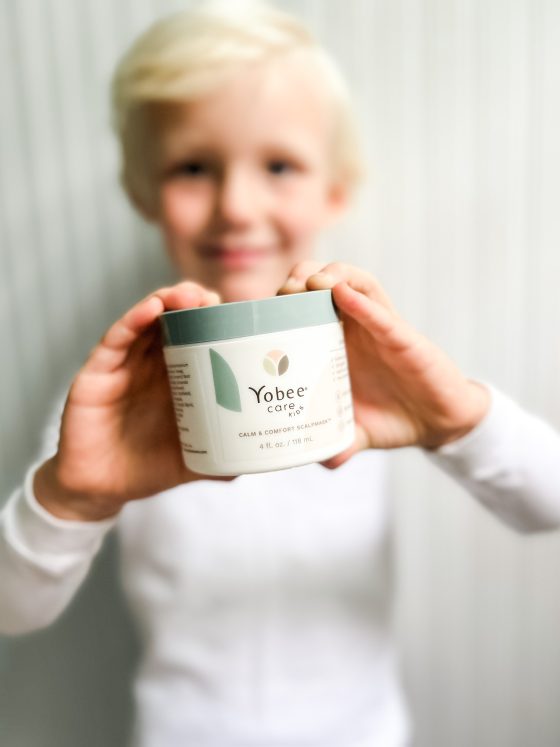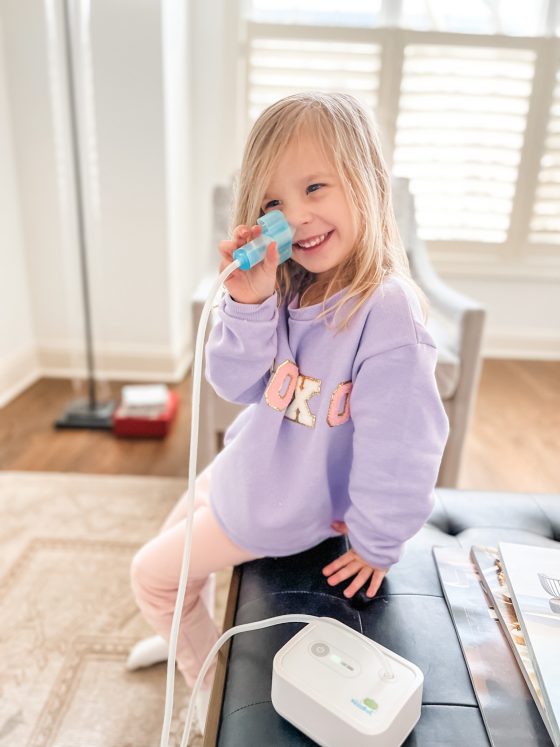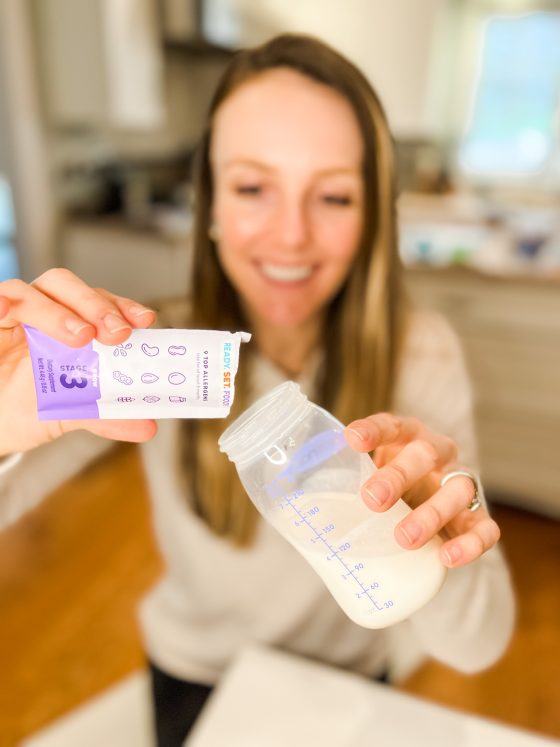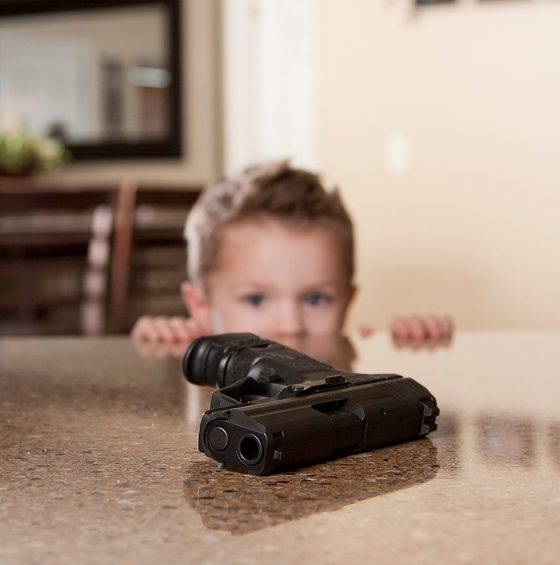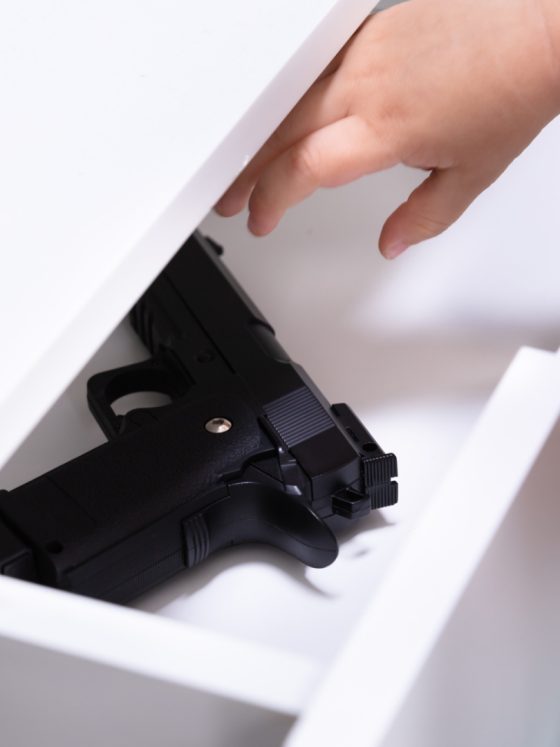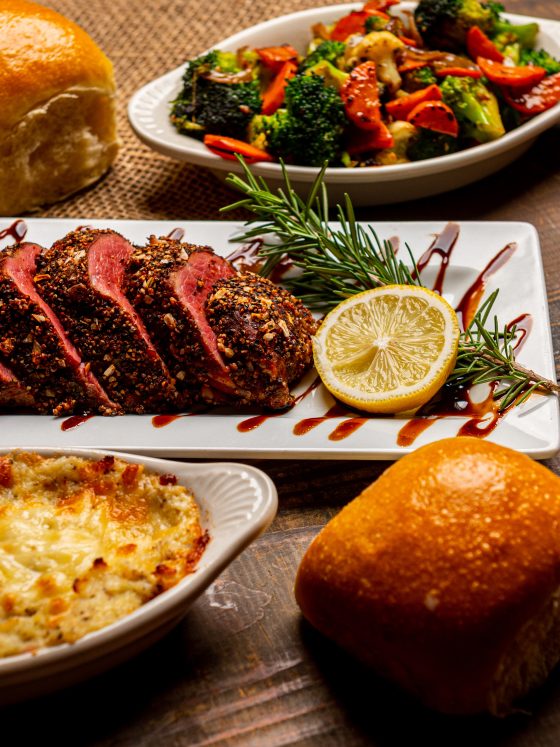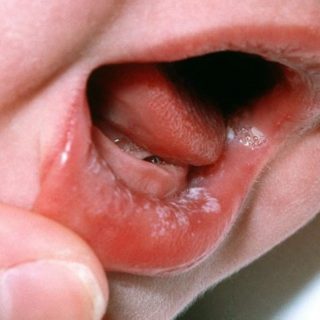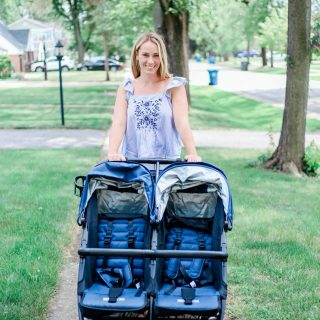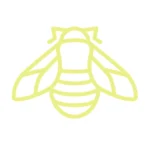Water safety tips and our favorite life jackets for your kids

The summer is here! Understanding water safety with children is a top priority – and here are tips on life jackets, swimming and more.
Adult supervision is necessary for water safety
Drowning is the number one cause of accidental death in the US for children between the ages of 1 and 4. It is terrifying to think about – but doing your part with water safety will greatly reduce the risk of drowning!
**We want to stress that when using a life jacket or other type of personal floatation device (PFD), your child should still be under close adult supervision. Wearing a PFD is not a fool proof safety measure.
Comfort around the water should be encouraged from a young age! Swim lessons can be started around 6 months of age in most cases (Kate goes to Goldfish Swim School with all 3 kids). Time should be spent in a life vest and also out of them – floatation devices are great, but the child should know how it feels to be out of a PFD in the water as well.
You could also consider investing in ISR swim lessons with your baby and child. We recognize that this is not feasible time wise or financially for most families, so we want to provide you with more information on water safety.
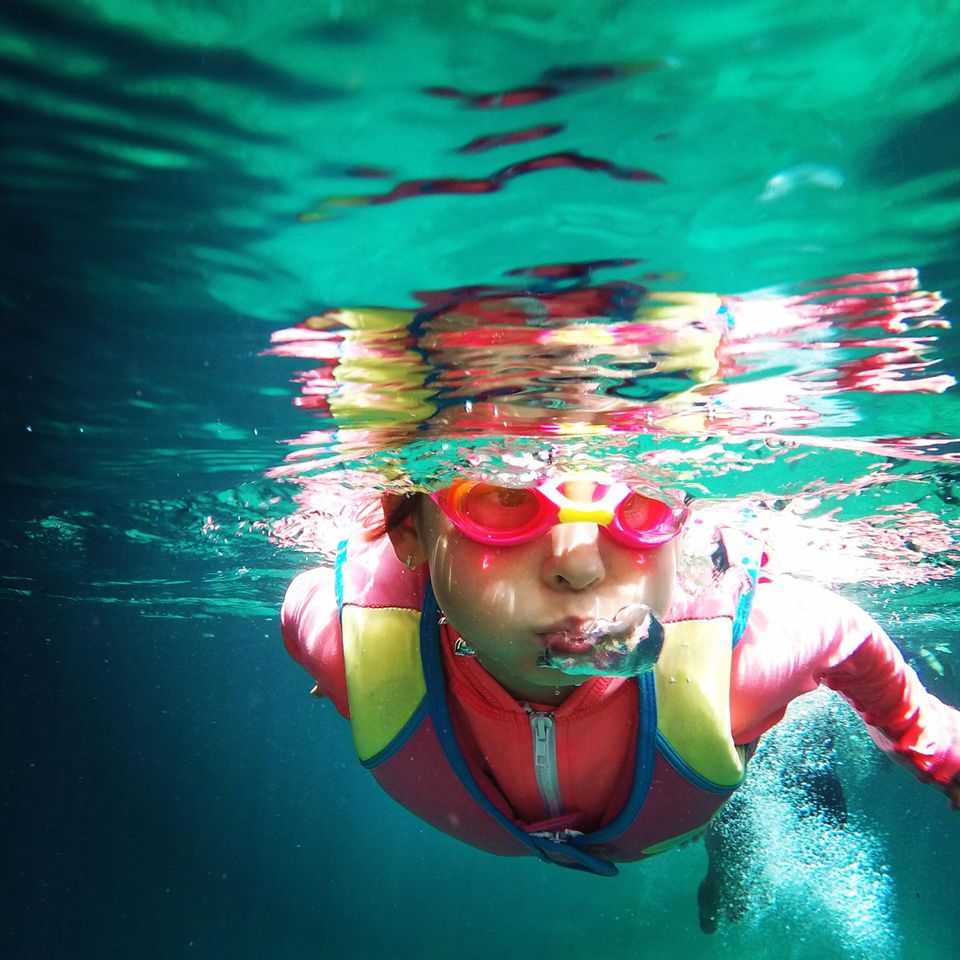
Importance of learning infant + child CPR
We also cannot stress enough the importance of learning infant and child CPR. Performing CPR on your child correctly is the difference between life and death! This CPR can be used to save your child’s life in a drowning event. Book an in-person infant and child CPR course today with Kate, Lauren or Natalie or take Kate’s online refresher course here (use code BUMBLE15 for discount).
BOOK IN-PERSON CPRBOOK ONLINE CPR COURSE
Bumblebaby rule:
Anytime your child is around a body of water, they should be in a personal flotation device (PFD) and have adult supervision.
THE ENTIRE TIME. Accidents happen all the time, even when there are multiple adults around! Children can fall, jump or crawl into water without even realizing – and drowning is SILENT and only takes MINUTES for brain damage and death to occur. I never like to scare parents, but this is something that should be taken very seriously!
Choosing a personal flotation device (PFD)
Make sure it’s US Coast Guard Approved Type II or Type III
First, let’s go over the importance of choosing a PFD. Not all PFDs are created equal. It’s highly important to choose a flotation device that is US Coast Guard (USCG) approved. This means the device has gone through testing to make sure it actually keeps humans afloat in the correct position in a body of water. There will be a statement somewhere on the life jacket/vest that states the item is USCG approved, so make sure to check yours!
There are some on the market, specifically Amazon, that are not USCG approved. There are different types of PFDs – look for a USCG Approved Type II PFD – which basically is made for “near shore” rescues (type I is for rough, deep offshore) and is meant to turn unconscious victims face up in the water.
USCG Approved Type III PFDs are good for protected, inland water near shore, where chance of immediate rescue is high. Type III PFDs are not suitable for extended survival in rough water and are NOT designed to turn unconscious people face up in water.
In short, if you are going to be boating, I suggest a Type II PDF. Swimming in pools and calm waters, Type III is acceptable. All of the PFDs below are USCG Approved Type II or Type III. Even if you are only going to be in a pool, your child’s PFD should be USCG Approved.
Pick a BRIGHT color
Choose a PFD that is BRIGHTLY COLORED – stay away from blue, turquoise, and white. The whole point of a PFD is to be able to see the child in contrast to the blue water (with the reflection of a blue sky). Even though you know Bumblebaby loves their blue 😉, we suggest buying a PFD that is orange, yellow, bright pink, etc. because it is easily spotted in the water.
We suggest buying bathing suits in the same color family. Here is our blog post on safe swimwear.
Be mindful of the weight limits
Weight limits and recommended sizes do matter with PFDs – too big and your child may actually slip through the PFD, and too small may not keep them afloat. Make sure the fit is snug but comfortable and the straps are tightened.
Don’t forget a whistle
As an added safety measure, attach a whistle to all PFDs for children who are old enough, especially if boating. This helps rescuers locate your child if needed.
Infant PFDS: 0-30 pounds
Safety features:
Infant PFDs are meant to float the child into a back float position and the design holds baby’s head above the water while back floating. There is a groin strap and abdominal strap as well to keep the PFD in place.
- Full Throttle Infant Life Vest – USCG Approved Type II
The color is bright, too. I like this one for younger infants who are less mobile, but works once they are crawling and walking too. There is an added strap at the top for easily pulling out of the water.
- O’Brien Baby Safe Infant Life Vest – USCG Approved Type II
Similar design to the Full Throttle above but in neoprene, quick drying material. I love bright pink for easy visibility and a strap for easily pulling out of the water.
- Stearns Infant – USCG Approved
I love this one for infants 6+ months who are sitting up more and I also like this one too! The Full Throttle and O’Brien don’t allow as much room for neck movement, so once babies are around 6 month, the head movement capability with this PFD is great! This is what I have for Roey.
- O’Neill Infant Life Jacket – USCG Approved Type II
More traditional design. I prefer for older toddlers (2+) who more petite over the previous two. Make sure to pick the non-blue design – love the pink and and bright yellow.
Toddler PFDs: 30-50 pounds
Safety features:
Three buckles across chest and abdomen and groin strap. Most have neck floatation.
- Stearns Child and SeaChoice Child – USCG Approved Type II
I like these because of the added neck flotation feature and extra bright colors.
- Stearns Classic Child Vest or Speedo Life Jacket – USCG Approved Type II
Great for visibility. The Speedo has a quick dry material as well. The difference with these are there is no neck flotation for this PFD.
- Body Glove Paddle Pals or Speedo Splash Jammer – USCG Approved
Similar to a puddle jumper – we love these! This is what I use at pools and lakes – it’s easier for kids to swim in than a traditional vest. I prefer the Splash Jammer over a puddle jumper because of the extra safety feature of the straps over the shoulders to keep the device on the arms. Love this green color and pink one too. Remember to pick a bright color that’s not blue!
- Classic Orange Vest – USCG Approved Type II
May not be the cutest, but it’s effective! And budget friendly.
Child PFDs: 50-90 pounds
The big difference between this weight category is the absence of the neck float and the groin strap.
- Speedo Youth Life Jacket – USCG Approved Type III
I love this for the neoprene quick dry material that’s also light weight but effective. I suggest this for boating.
- O’Neill Youth and Full Throttle Youth Life Vest – USCG Approved Type III
- Classic Orange Vest – USCG Approved Type II
May not be the cutest, but it’s effective! And budget friendly.
Pool safety tips
- If you own a pool, this pool alarm comes highly recommended. It senses movement in the water and alarms. It would be great to bring on vacation, too.
- Door locks for latches, sliding doors (or alarm for doors), and knobs are a MUST for all doors, especially if you have a pool. I bring them on vacation every time!
- High pool gates such as this around the entirety of the pool are an important safety feature.
- Consider investing in ISR swim lessons with your baby and child if you have a pool in your yard.
- Here are some apps that can teach your children about pool safety! Additionally we love this book and this book about water safety. There are also PDFs to print and teach as well!
For more information on pool safety, visit here.
Here are some helpful tips from poolsafety.gov:
The importance of knowing CPR
It is paramount that you know CPR as a caregiver/parent. Sign up for our in-home CPR if you live in Chicago and check out our online infant and child CPR class (use code BUMBLE15 for any Tinyhood class)
BOOK IN-PERSON CPRBOOK ONLINE CPR COURSE
Check out our Bright and Safe Swimwear Blog Post and Amazon store for more of our favorite summer essentials by age.
Summer essentials 0-6 months / Summer essentials 6-12 months / Summer essentials toddler
For more home safety info and baby/child proofing recommendations with all of our favorite products and tips, checkout our Home Safety E-guide.
Other helpful Bumblebaby blog posts:
- Bright swimwear – why it’s important and our top picks for your baby and toddler
- Renee’s top 5 must have safety items for under one
- Why learn CPR?
- 5 common choking foods and how to safely feed them to your baby
**This post is educational and not meant to take the place of your provider. Bumblebaby makes a small commission on some of the items listed above







